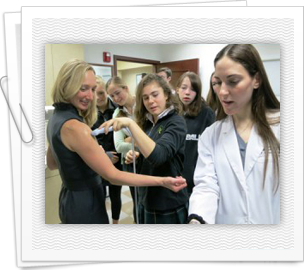Online CPR Certification Blog
Drive through medicine
Date: October 25th, 2013
 As a victim of a highly contagious and dangerous disease, I am being moved to a triage place in a mobile, isolated self contained pod. My pod is being manned by a doctor robbed completely in protective gown and wearing a mask and examines me via a porthole at the machine side. This seems like a bad dream or a creepy fiction/ science movie. Something similar to this was tested at the Stanford University Medical Center last summer. However, rather than the isolation pod being a high tech device, this time it was an old family car.
As a victim of a highly contagious and dangerous disease, I am being moved to a triage place in a mobile, isolated self contained pod. My pod is being manned by a doctor robbed completely in protective gown and wearing a mask and examines me via a porthole at the machine side. This seems like a bad dream or a creepy fiction/ science movie. Something similar to this was tested at the Stanford University Medical Center last summer. However, rather than the isolation pod being a high tech device, this time it was an old family car.
How emergency rooms handle influenza pandemics
Every year during the flu season, all emergency rooms in the country are filled to their capacity, says Dr. Eric Weiss, the co- author of a study titled: ‘Drive- Through Medicine: A novel proposal for Rapid Evaluation of Patients During an Influenza Pandemic’. This study was published in the issue of Annals of Emergency Medicine on Jan. 18. And as the sick people flock the crowded emergency departments in hospitals waiting for hours to see the doctor, they end up spreading the germs to medical staff and other patients in the waiting room. The researchers asked if there was a way the patients could be screened more quickly while minimizing contagion risk at the same time.
This led to Dr. Greg Gilbert coming up with a unique model: This model features a drive through emergency room where patients are stationed and the cars pulling up. These cars are to serve as the self contained isolation units and the doctors then examine patients through the car window or curbside. The researchers tested the idea by recruiting volunteers who were sent to a local parking garage that was designed to act as drive through medical clinic. Volunteers chosen to play flu victims made use of scenarios that were created from the charts of real patients suffering from influenza like illnesses. They were treated in April 2009 during the H1N1 outbreak at a local health care facility.
The successfulness of the pilot project
After the arrival of the ‘patients’, the first thing was to register them and nurses outside the facility triaged them. ‘Patients’ who looked sick were then directed to the garage where doctors with protective gear, masks and gloves screened them by taking their blood pressure and used stethoscopes to listen to their breathing and finally discussed the symptoms with the patients. This pilot project was successful and the report noted that the length of stay of the patients was reduced by about 1.5 hours compared to the traditional ER.
Examinations at the garage had a median length of 26 minutes, a significant difference to the 90 minutes taken in hospitals. The physicians were able to identify 100 percent among participants playing the flu patient role. In fact, car emissions didn’t seem to be a problem as the participants didn’t show any significant increase in carboxyhemoglobin.